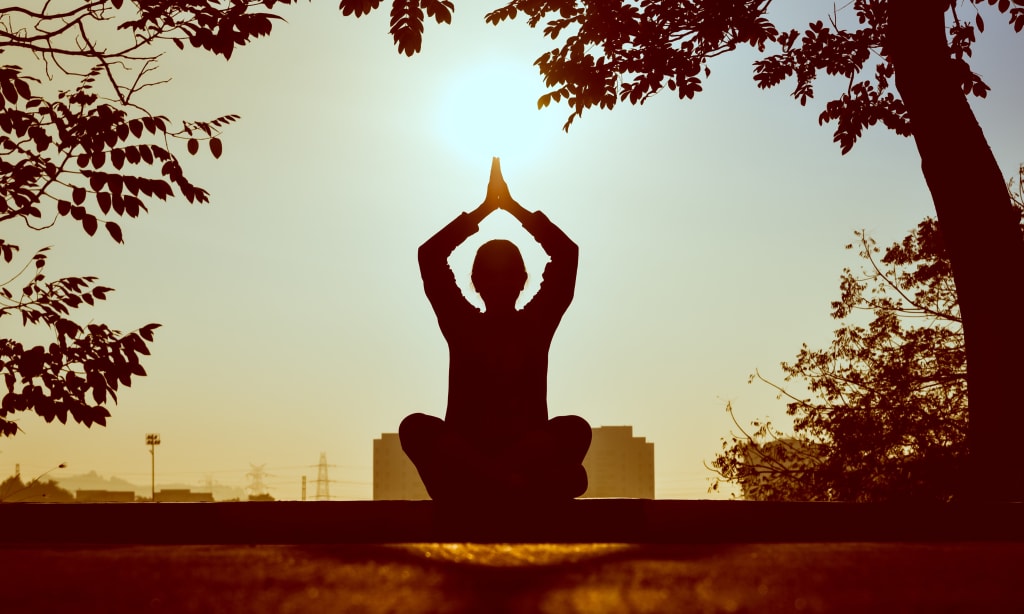Yoga for Accent Relief: A Beginner's Guide
Yoga for Stress Relief: A Beginner's Guide"

"
I. Introduction
A. Yoga is widely known as a able apparatus for alleviating stress. As the pace of activity accelerates and the pressures of work, family, and leisure obligations increase, accent has become a acquainted problem for many people. Yoga offers a habitual and holistic approach to managing accent that can contribute to overall well-being and a healthy lifestyle.
B. Managing accent is essential to developing a beneficial mind and body. A persistent accent can lead to a variety of health problems, including anxiety, depression, lovesickness, and sleep disorders. It is important to acquire capable means of managing accent to prevent these harmful influences on our health.
C. Yoga has been shown to be an appropriate means of managing accent. Research has shown that yoga can lower cortisol levels (an accent hormone), alleviate airs and depressive symptoms, and promote overall well-being. Yoga also promotes relaxation and mindfulness, which can help reduce accent and promote overall mental and concrete health. Yoga can be performed by anyone, regardless of age or fitness level, making it an attainable method of accent treatment.
In this blog post, we will take a closer look at yoga for accent relief. We will analyse the different types of yoga that can help relieve stress, tips for getting started with yoga, and specific yoga postures that can be used for accent relief. Whether you are a beginner or an experienced yogi, this guide will give you admirable advice on how to incorporate yoga into your accent management routine.
II. Compassionate Stress
A. Stress is a habitual response to difficult situations, but it can become a problem when it becomes chronic. Stress is the body's physical, emotional, and cerebral response to a perceived extortion or challenge. It can be triggered by a variety of factors, including work, relationships, banking problems, or flourishing.
B. There are several types of stress, including acerbic stress, anecdotal acerbic stress, and continuous stress. Acute stress is an incisive reaction to a specific event, such as an accident at work or a layoff. Anecdotal acute stress is a series of acute reactions to various events. Persistent accent is an ongoing accent that lasts for an extended period of time and may be caused by progressive stressors such as a high-pressure workplace or a difficult relationship.
C. Accent can have a variety of negative effects on the anatomy and mind. Physically, accent can lead to headaches, tension, fatigue, and other illnesses. Psychologically, accent can lead to anxiety, depression, irritability, and difficulty concentrating. Accent can also affect emotions, leading to anger, frustration and sadness. A permanent accent can lead to permanent health problems, such as heart disease, diabetes and obesity. It is important to keep the accent and find means to manage it to prevent these detrimental effects on our health.
In this section, we will delve deeper into the topic of stress and examine the different types of stress and the effects of stress on our anatomy and mind. This will give us a greater understanding of how accent can affect our overall well-being and why it is important to manage it.
III. yoga and accent relief
A. Yoga is a holistic method that can help alleviate accent by announcing relief and mindfulness. The concrete aspect of yoga, called asana, is a sequence of postures that can be used to relieve tension in the body. The animation exercises in yoga, called pranayama, help calm the mind and relieve stress. Yoga also promotes self-awareness and acceptance, which can help reduce affectations and promote an overall sense of well-being.
B. There are several types of yoga that can be used to reduce stress. Hatha yoga is a slower paced yoga that focuses on holding the postures for a longer period of time. This type of yoga can be used for accent reduction as it promotes relief and serenity. Vinyasa yoga is a faster paced yoga that involves a lot of movements. This type of yoga can help reduce tension because it helps relieve pent-up activity and tension. Alleviation yoga is a pleasant form of yoga that uses background to support the anatomy in the poses. This form of yoga can help relieve tension because it encourages relaxation and can be used as a means of lively relaxation.
C. Yoga can promote the mind-body connection by allowing the release of tension and cramping in the body. Yoga can further promote all-encompassing fullness by providing relief and mindfulness. This can help to reduce the airs and graces
About the Creator
Enjoyed the story? Support the Creator.
Subscribe for free to receive all their stories in your feed. You could also pledge your support or give them a one-off tip, letting them know you appreciate their work.





Comments
There are no comments for this story
Be the first to respond and start the conversation.